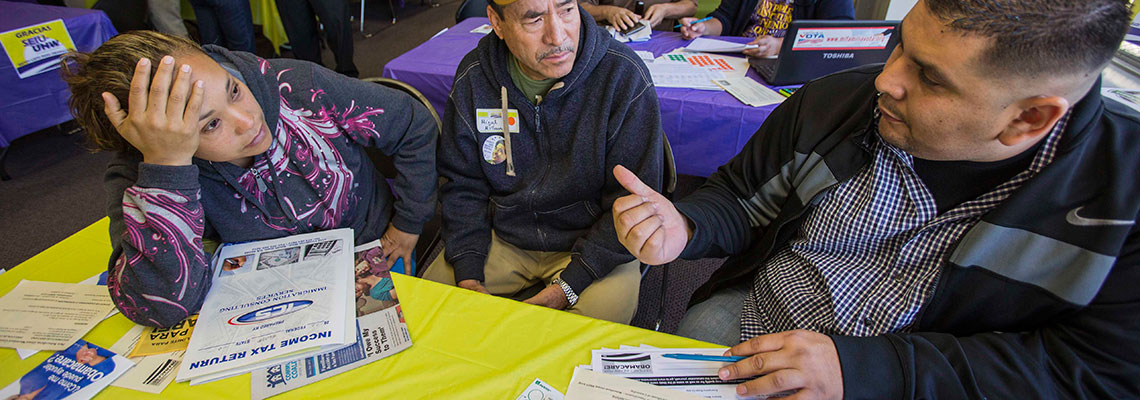
As the second round of open enrollment begins under the Affordable Care Act (ACA), health plans, health care providers, consumer assisters, and state and federal officials are hoping to apply lessons learned from 2014 to help enroll more people in 2015. To draw out those lessons, we compared the experiences of four states and found that a coordinated statewide strategy and coalition of diverse stakeholders appeared to improve enrollment outcomes on the federal Marketplace.
Differences in demographics, premium rates, and the number of uninsured, however, appeared to have little to do with these states’ different enrollment outcomes.
For our study, we compared two pairs of states—North Carolina and South Carolina, and Ohio and Wisconsin—with similar attributes but different Marketplace enrollment rates. According to recent research from Urban examining Marketplace enrollment projections for 2014 and 2016, North Carolina had the sixth highest enrollment rate in the country at 145.3 percent of projected enrollment compared to South Carolina’s enrollment rate of 101.3 percent. In the Midwest, Wisconsin reached 130.3 percent of projected enrollment compared to 75.3 percent for Ohio.
All four study states used healthcare.gov in 2014, and faced similar technical challenges with the website. Additionally, all states received proportionately comparable levels of federal funding for consumer outreach and enrollment assistance and were home to significant anti-ACA political activity.
What did we learn?
Why were there such dramatic differences between those two pairs of states? Not surprisingly, unique factors appeared to affect enrollment experiences in each of the states. But important themes emerged from the analysis.
First, North Carolina and parts of Wisconsin had a long history of partnerships and coordination among diverse stakeholders, including consumer advocates and community-based organizations. These relationships created a collaborative environment for outreach and enrollment efforts, which appeared to improve federally facilitated Marketplace (FFM) enrollment. Local government support and private funding from local foundations also appeared to support these collaborative structures.
Second, the troubled launch of healthcare.gov and a highly polarized and partisan backdrop of ACA debate affected states and local communities differently and appeared to be more intense in the two states with lower enrollment rates: South Carolina and Ohio.
Finally, in Wisconsin and Ohio, enrollment appeared to be affected by changes to each state’s Medicaid program. Ohio expanded Medicaid in 2014, so enrollment efforts focused particularly on those newly eligible for Medicaid rather than the Marketplace. In Wisconsin, under the governor’s entitlement reform plan, over 60,000 people lost Medicaid coverage, and targeted efforts were made to help them enroll in the FFM.
Looking ahead to 2015
One thing to look for in 2015 is whether states that had lower Marketplace enrollment rates in the first year might do better the second year. Individuals and organizations involved in outreach may have developed closer working relationships and, as a result, may be able to develop consistent statewide messaging and enrollment strategies.
Another thing to watch in 2015 is to see how states on the FFM that expanded their Medicaid programs perform in Marketplace enrollment. Researchers observed that nine out of the ten states that used healthcare.gov and also expanded Medicaid in 2014 had lower than projected enrollment, as was the case in Ohio. Now that these states have had an opportunity to enroll people in their expanded Medicaid programs, it will be interesting to see if they perform much better on the FFM during the upcoming open enrollment period.
Photo: A worker assists two people applying for insurance during the 2013-2014 open enrollment period. (AP Photo/Ringo H.W. Chiu)
Tune in and subscribe today.
The Urban Institute podcast, Evidence in Action, inspires changemakers to lead with evidence and act with equity. Cohosted by Urban President Sarah Rosen Wartell and Executive Vice President Kimberlyn Leary, every episode features in-depth discussions with experts and leaders on topics ranging from how to advance equity, to designing innovative solutions that achieve community impact, to what it means to practice evidence-based leadership.